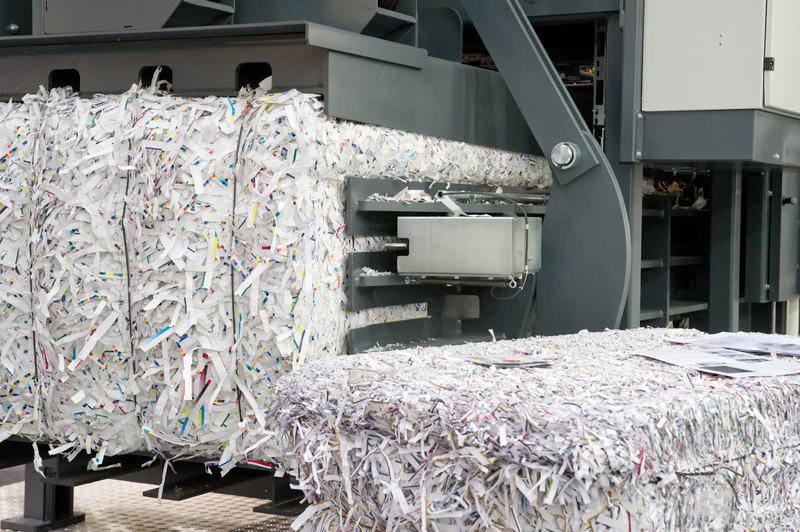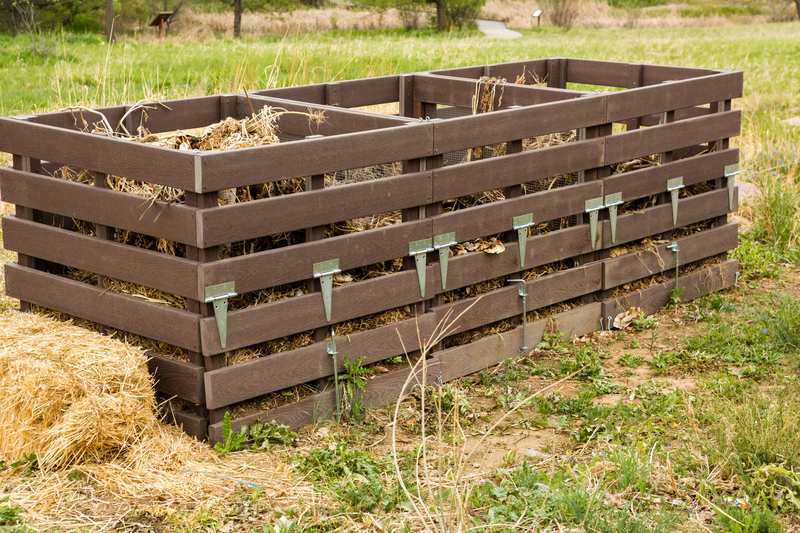Exploring Solutions: Can We Halt Microplastic Pollution?
Microplastic pollution has rapidly become a top environmental concern, infiltrating oceans, rivers, the atmosphere, and even the food we eat. As plastic consumption worldwide continues to grow, so does the challenge of addressing microplastics--a persistent pollutant affecting wildlife, human health, and entire ecosystems. In this in-depth article, we'll explore the origins and impacts of microplastic contamination and assess practical solutions to halt its spread. From innovative technological breakthroughs to lifestyle changes and strategic policies, discover how we can collectively combat microplastics and safeguard our planet's future.
Understanding Microplastic Pollution
What Are Microplastics?
By definition, microplastics are tiny plastic pieces measuring less than 5 millimeters in diameter. They are classified into two categories:
- Primary microplastics: Manufactured at a microscopic scale, like microbeads in cosmetics or microfibers in textiles.
- Secondary microplastics: Formed from the breakdown of larger plastic debris through weathering, UV exposure, and physical abrasion.
Sources of Microplastic Contamination
The proliferation of microplastic contamination is linked to numerous everyday activities and industrial processes. Key sources include:
- Laundry: Synthetic fibers shed from clothing during washing.
- Personal care products: Microbeads found in cleansers and toothpaste (though increasingly banned in many countries).
- Packaging waste: Decomposition of plastic bags, bottles, and wrappers.
- Tire abrasion: Road run-off carries minute rubber and plastic particles from tire wear into waterways.
- Industrial runoff: Plastic pellets or nurdles lost during transport or manufacturing.
- Paints and coatings: Degradation from ships, buildings, and road markings.
Why Is Microplastic Pollution So Dangerous?
Microplastic pollution poses several threats:
- Ecological harm: Marine and terrestrial animals can ingest or become entangled in microplastics.
- Toxin accumulation: Microplastics can concentrate environmental pollutants, which then enter food chains.
- Human health risks: Potential intake through seafood, drinking water, salt, and air could have unknown health consequences.

Cutting-Edge Solutions to Tackle Microplastic Pollution
1. Technological Innovations in Filtration and Cleanup
- Advanced wastewater treatment: Upgrading municipal wastewater treatment plants with finer filters, like membrane bioreactors, can capture most microplastics before effluent reaches natural water bodies.
- Textile innovations: Development of washing machine filters (e.g., Guppyfriend bags, external lint filters) can trap microfiber plastics during laundry.
- Vacuum dredging and cleanup tools: Robotic devices and specially designed trawlers can collect microplastics directly from water surfaces.
- Stormwater management: Installing filters and sediment traps in urban drainage systems helps reduce runoff-borne microplastics.
2. Biodegradable Alternatives and Material Rethinking
- Bioplastics: Replacing conventional plastics with biodegradable or compostable materials derived from plant starches or algae limits microplastic generation.
- Natural textiles: Promoting cotton, wool, hemp, and other natural fibers reduces microfiber shedding during washing.
- Microbead bans: Legislation to prohibit the use of microbeads in cosmetics and cleaners is already proving successful in many countries.
3. Policy Interventions and Industry Regulation
- Extended Producer Responsibility (EPR): Mandating that manufacturers take back and recycle end-of-life plastics reduces litter and incentivizes eco-design.
- Plastic taxes and levies: Economic incentives promote the use of reusable packaging and decrease single-use plastic reliance.
- Ecolabeling: Certifications that inform consumers about the microplastic impact of products, from apparel to packaging.
- International cooperation: Global treaties, such as those under the United Nations Environment Programme (UNEP), can harmonize microplastic reduction efforts.
4. Raising Awareness and Changing Consumer Behavior
- Education campaigns: Informing the public about microplastic threats and environmentally-friendly habits.
- Supporting circular economy: Encouraging repair, reuse, and recycling of plastics to minimize waste and prevent microplastic formation.
- Responsible consumption: Favoring products with minimal or no plastic packaging and choosing clothing made from natural fibers.
5. Research and Monitoring
- Global monitoring programs: Initiatives to measure microplastic levels in air, land, and water help identify hotspots and monitor progress.
- Scientific research: Ongoing studies into the effects of microplastics on human health, ecosystems, and the fate of plastics in the environment inform future strategies.
- Citizen science: Projects inviting public participation in microplastic sampling and beach clean-ups.
Case Studies: Success Stories in Microplastic Reduction
The European Union's Microbead Ban
The EU has been at the forefront of phasing out microbeads in personal care and cleaning products. The ban, which came into effect across member states, has significantly reduced the influx of primary microplastics into wastewater systems--a step that has already shown measurable decreases in microplastic concentrations in rivers and seas.
Innovative Textiles in the Fashion Industry
Leading fashion brands are now investing in sustainable, low-shedding fibers and integrating microfiber traps at the production stage. For example, some companies are using enzyme treatments that reinforce fiber bundles, reducing microplastic emissions during washing.
Grassroots Ocean Cleanup Movements
Organizations like "The Ocean Cleanup" and "4ocean" have developed floating barriers and skimming devices that collect both macro- and microplastics from key ocean gyres. These projects, powered by community support and innovative design, demonstrate that targeted clean-up, though not a standalone solution, can play a vital role in addressing microplastic pollution at sea.
The Role of Individuals in Halting Microplastic Pollution
While systemic change remains crucial, individual actions have a compounding effect. Here's how you can join the fight against microplastic contamination:
- Install laundry filters: Use products such as Guppyfriend or retrofitted machine filters to catch microfibers.
- Avoid personal care products with microbeads: Look for natural exfoliants like oatmeal or salt.
- Choose natural fibers: When shopping for clothes, prioritize cotton, linen, or bamboo.
- Minimize single-use plastics: Switch to reusable shopping bags, bottles, and food containers.
- Dispose of plastics responsibly: Never litter, and participate in or organize local clean-up events.
Supporting Responsible Brands and Policies
Consumers wield enormous power. Choose to buy from companies committed to reducing microplastic output and support regulatory changes by advocating for stricter policies or participating in public consultations. Simple everyday decisions collectively drive demand for sustainable alternatives, which is vital in the fight to halt microplastic pollution.

Challenges and Limitations: Can We Truly Halt Microplastic Pollution?
Halting microplastic pollution entirely is an ambitious goal facing several significant hurdles:
- Legacy pollution: Trillions of microplastic particles already litter the oceans and land, persisting for centuries.
- Limited technology: Current filtration systems, while improving, do not yet capture microplastics at a nanoscale nor in all environments.
- Fragmented regulations: Inconsistent enforcement and standards across borders hamper comprehensive solutions.
- Knowledge gaps: The full impact of microplastics on human health and the environment is still being uncovered.
- Consumer habits: Plastic convenience, low cost, and marketing inertia slow the shift toward alternatives.
Despite these challenges, the rapid growth in awareness, research, and policy changes is fueling optimism. While total elimination may be elusive in the short term, significant reductions and mitigation of future microplastic generation are well within reach, especially with global cooperation.
The Path Forward: Collaboration, Innovation, and Commitment
Solving microplastic pollution demands a combination of top-down and bottom-up approaches--policy reform, technological advancement, industry adaptation, and individual behavioral change. The path forward includes:
- Embracing sustainable design: Products and packaging should prioritize environmental safety from inception to disposal.
- Accelerating research funding: Governments, NGOs, and private enterprises must invest in understanding microplastic impacts and developing removal and prevention technologies.
- Global standards and cooperation: International agreements can help close loopholes and ensure all stakeholders meet environmental targets.
- Education and empowerment: Integrate microplastic education into school curricula and community programs to foster lasting change.
Microplastic pollution may seem overwhelming, but by combining proactive strategies with public engagement and ingenuity, we can curb its spread and preserve ecosystems for generations to come.
Conclusion: Turning the Tide on Microplastic Pollution
Can we halt microplastic pollution? While the road ahead is challenging, a multi-pronged, united effort can make a measurable difference. By supporting technological innovations, demanding policy reforms, choosing responsible products, and raising awareness, each of us plays a vital part in this urgent mission. Only through global solidarity, science-led solutions, and committed action can we hope to stem the tide of microplastics and secure a cleaner, safer world.
Let's act together--by addressing microplastic pollution now, we protect not only our environment but also the health and well-being of future generations.